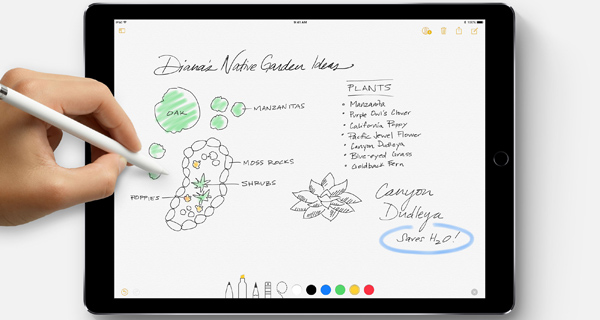While we thoroughly enjoyed iOS 10’s open functionality and all it offered app developers, Apple’s premiere operating system is due for a refresh. iOS 11 has been making waves in its public beta release, here are the top upgrades coming to Apple’s landmark OS:
MAJOR UPGRADES FOR IPAD
Apple’s iOS 11 preview states right off the bat: “A giant step for iPhone. A monumental leap for iPad.” iOS 11 offers a number of improvements for iPad users.
The improved Dock now looks a lot like the macOS dock. Users can put dozens of apps in the doc and easily pull it up by swiping upward.
Need to use two apps at the same time? iOS has your back. Like Picture-In-Picture Mode for Android, which we detailed last week in our coverage of Android Oreo, iOS 11 allows you to use two apps at the same time—something that will inevitably come in handy on the large screens of the iPad.

APPLE PENCIL receives a major upgrade in iOS 11. Instant Markup makes it easy to mark up PDFs, screenshots and more. Instant Notes and Inline Drawing let you customize your screen. The Scan and Sign feature also makes it easy to sign important documents online and send them in the flash of an eye.
SIRI MATURES
WIRED recently detailed the path toward improving the voice of iOS: Siri. While Google and Amazon have excelled in their virtual assistant development, Siri seems to have lagged behind. iOS 11 revamps Siri’s voice to sound much more natural, while also teaching her to translate Chinese, Spanish, French, German, or Italian.
GET READY FOR AUGMENTED REALITY!
When Pokemon Go took the world by storm, “Augmented Reality” became a household name. Now, the time has come for app developers rejoice! iOS 11 features ARKit, a new development framework that makes it easy for developers to build incredible AR experiences.
ARKit allows developers to create 2D or 3D elements in the live view from iPhone and iPad camera’s in order to make them appear as if they exist in the real world. ARKit combines device motion tracking, camera scene capture, advanced scene processing, and display conveniences to make building AR experiences a breeze.
Check out some of the best AR experiences built with ARKit so far.
CAMERA TIME
Thanks to a new compression technology, iOS 11 will be able to store video using less space than ever. Additionally, the camera will allow users to loop live videos, to trim and edit live videos, to grab a still from a live photo, and to capture time and movement with long exposure photos.

APP STORE REDESIGN
The rigorous standards of Apple’s App Store always lent itself to curation. With that in mind, Apple has redesigned the App Store to emphasize discovery. The new App Store will offer a completely separate tab for Games, a variety of daily stories and a tab for the best apps of the day, all curated by Apple!
FILES, PAYMENT, AND MORE
iOS 11 is a comprehensive upgrade that comes equipped with a host of other great additions, including:
– FILES: Never lose track of important documents again! The Files app makes it easy to find files stored on iOS devices, in iCloud Drive, and even across other cloud services like Box and Dropbox.
– APPLE PAY IN IMESSAGE: iOS 11 will make peer-to-peer payments easy, allowing users to send Apple Pay payments as a part of iMessage.
– CONTROL CENTER: The Control Center has received a complete redesign. The new Control Center will appear all on one page and is customizable, allowing users to personalize the design to the most helpful layout.
TAKEAWAYS
If you are an iPad user, you are truly in for a treat when iOS 11 comes out. If you only use iPhone, iOS 11 still delivers a fresh redesign with improved functionality. iOS 11 is yet another solid entry in Apple’s OS canon.

